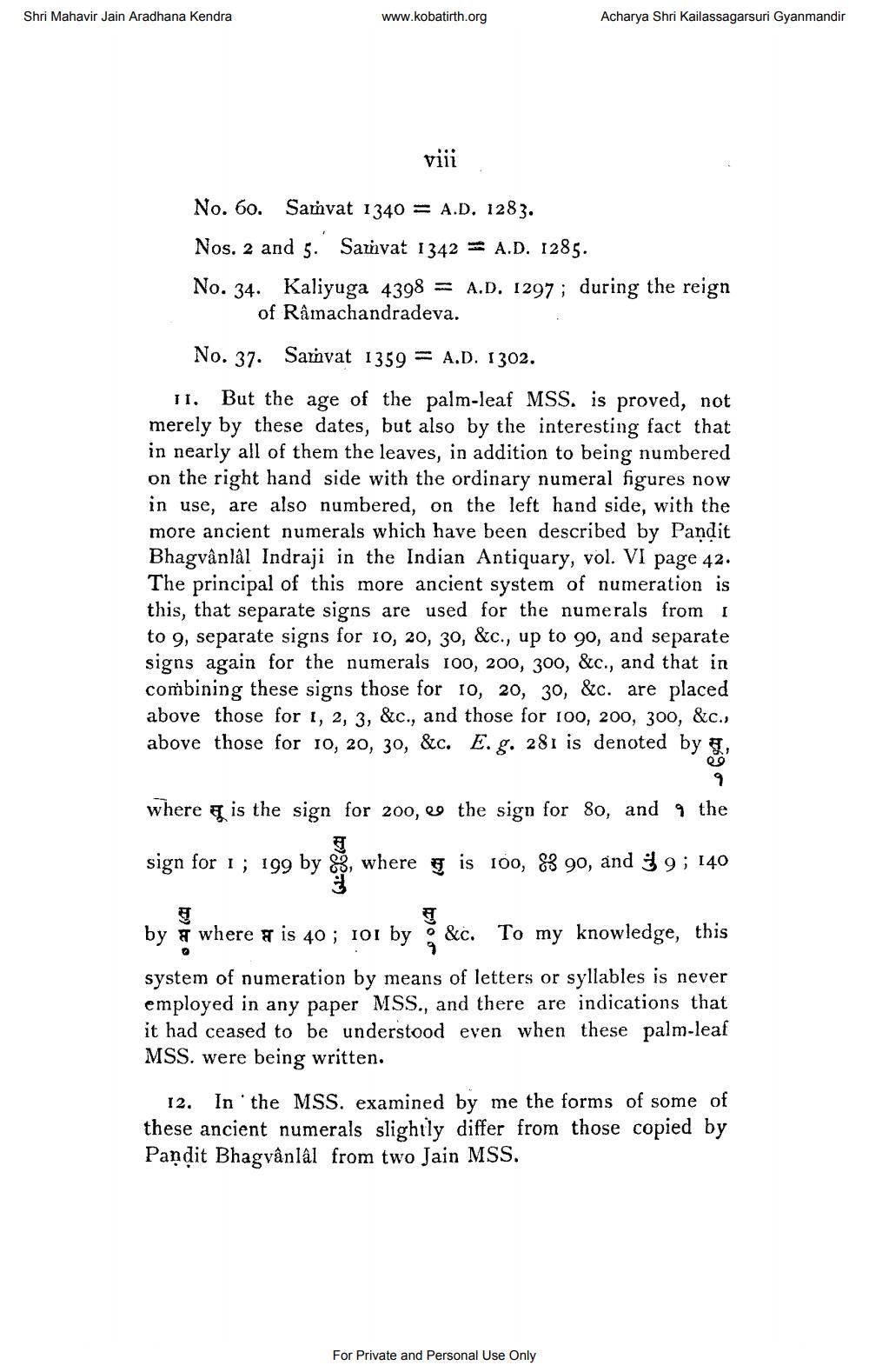________________
Shri Mahavir Jain Aradhana Kendra
www.kobatirth.org
Acharya Shri Kailassagarsuri Gyanmandir
viii
No. 60. Samvat 1340 = A.D. 1283. Nos. 2 and 5: Sauvat 1342 = A.D. 1285. No. 34. Kaliyuga 4398 = A.D. 1297; during the reign
of Ramachandradeva. No. 37. Samvat 1359 = A.D. 1302. 11. But the age of the palm-leaf MSS. is proved, not merely by these dates, but also by the interesting fact that in nearly all of them the leaves, in addition to being numbered on the right hand side with the ordinary numeral figures now in use, are also numbered, on the left hand side, with the more ancient numerals which have been described by Pandit Bhagvânlal Indraji in the Indian Antiquary, vol. VI page 42. The principal of this more ancient system of numeration is this, that separate signs are used for the numerals from i to 9, separate signs for 10, 20, 30, &c., up to 90, and separate signs again for the numerals 100, 200, 300, &c., and that in combining these signs those for 10, 20, 30, &c. are placed above those for 1, 2, 3, &c., and those for 100, 200, 300, &c., above those for 10, 20, 30, &c. E. g. 281 is denoted by ,
where & is the sign for 200,
the sign for 80, and 9 the
sign for 1; 199 by 8, where g is 100, 83 90, and § 9; 140
by
where g is 40 ; 101 by
&c. To my knowledge, this
system of numeration by means of letters or syllables is never employed in any paper MSS., and there are indications that it had ceased to be understood even when these palm-leaf MSS. were being written.
12. In the MSS. examined by me the forms of some of these ancient numerals slightly differ from those copied by Pandit Bhagvânlâl from two Jain MSS.
For Private and Personal Use Only




